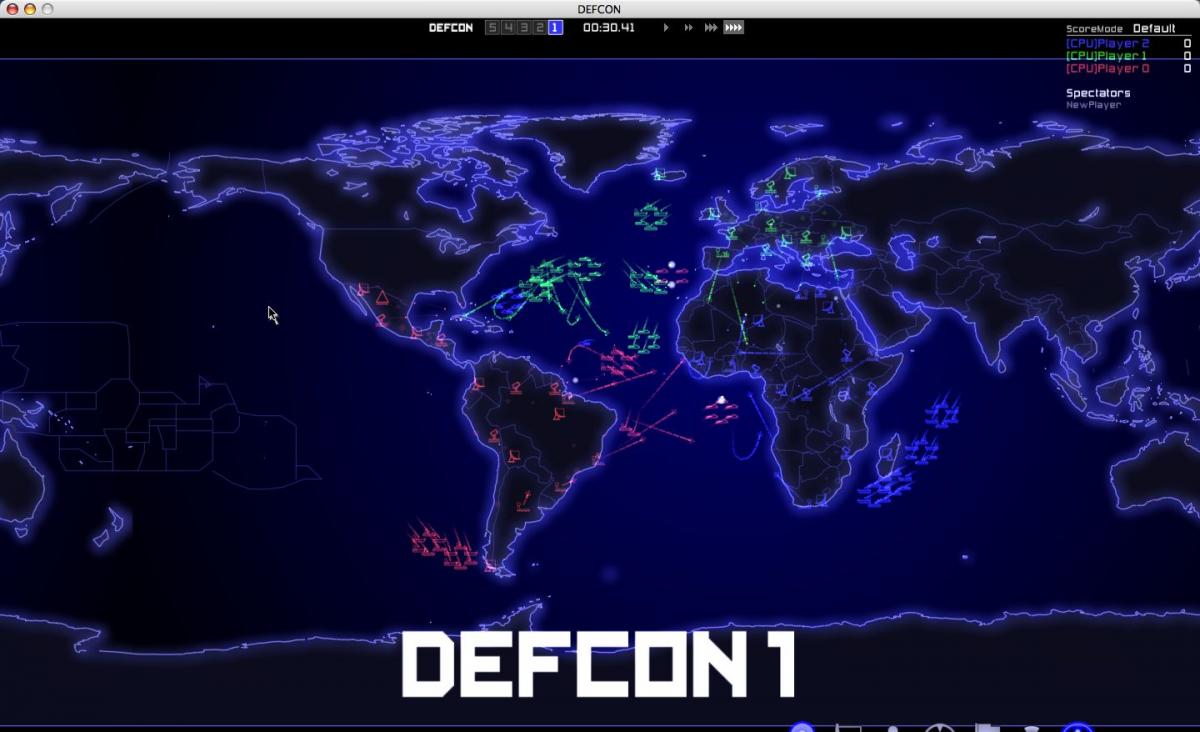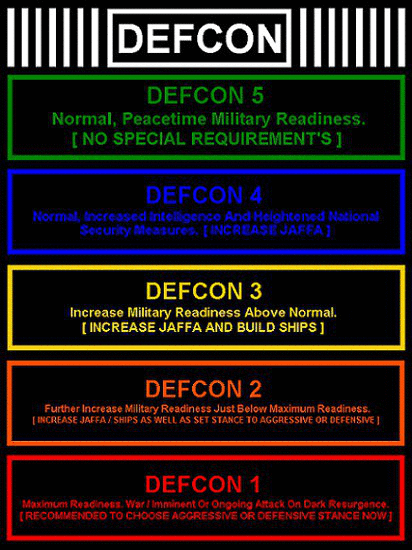
Tension grew and the next day SAC declared DEFCON II, a heightened state of alert, ready to strike targets within the Soviet Union. On 22 October 1962 SAC responded by establishing Defense Condition Three (DEFCON III), and ordered B-52s on airborne alert. It indicates that attack upon the continental United States, Canada, or US installations in Greenland by hostile aircraft or missiles is considered probable, is imminent, or is taking place.ĭuring the Cuban Missile Crisis, the US Strategic Air Command was placed on DEFCON 2 for the first time in history, while the rest of US military commands (with the exception of the US Air Forces in Europe) went on DEFCON 3. forces overseas, or allied forces in any area, and is confirmed either by the commander of a unified or specified command or higher authority or an overt attack of any type is made upon the United States and is confirmed by the commander of a unified or specified command or higher authority.ĪIR DEFENSE EMERGENCY: Air defense emergency is an emergency condition, declared by the Commander in Chief, North American Aerospace Defense Command. By definition, other forces go to DEFCON 1 during an EMERGCON.ĭEFENSE EMERGENCY: Major attack upon U.S. In general terms, these are descriptions of DEFCONs:ĭEFCON 4 Normal, increased intelligence and strengthened security measuresĭEFCON 3 Increase in force readiness above normal readinessĭEFCON 2 Further Increase in force readiness, but less than maximum readinessĮMERGCONs are national level reactions in response to ICBM (missiles in the air) attack. DEFCONs are graduated to match situations of varying military severity, and are numbered 5,4,3,2, and 1 as appropriate.ĭEFCONs are phased increases in combat readiness. The 7 LERTCONs are broken down into 5 Defense Conditions (DEFCONs) and 2 Emergency Conditions (EMERGCONs).ĭefense readiness conditions (DEFCONs) describe progressive alert postures primarily for use between the Joint Chiefs of Staff and the commanders of unified commands.
#Highest defcon level series
In the event of a national emergency, a series of seven different alert Conditions (LERTCONs) can be called. Similarly, if you are neutral with all other regions, you can only elevate your DEFCON as high as Level 2.DEFCON DEFense CONdition - United States Nuclear Forces FAS | You must at least be "neutral" with all regions to stay at DEFCON 5.



For further improvements, you must manually increase this to Levels 2or 1.) Signing a ceasefire agreement will allow you to reduce your DEFCON to level 4, should you so decide. (War sets your DEFCON to 3 automatically. When actively at war with another region, you are automatically at DEFCON level 3 or higher. Required DEFCON Levels - DEFCON Levels can only be changed within certain parameters. (Al I'lACt' MAX DEFCON 2) Annual Preparedness S 3,937 M DEFCON and alert levels will also affect unit efficiency and performance in battle, and improvements such as reload times and firing rates. In typical situations, your units should only be able to improve their alertness by approximately 15% per week - yet alert levels may drop by about double that rate, when funding is removed. As a regional leader, if you suddenly increase your DEFCON from 5 (Peace) to 2 (High), your units will be tasked to immediately increase their alertness, though it may take some time for them to reach the maximum levels. Higher DEFCON Levels Come at a Cost! The cost is exponential, and based on how many military installations you have and the number of units and personnel.Īssociated Alert Levels - Each DEFCON level gradually brings your units to a standing alert level. This increases to a 20% improvement at DEFCON 1. At DEFCON 2 you get a 10% improvement to the speed of unit production and training. As you move toward DEFCON 1, the highest state of alert, the efficiency of all your units improves (by up to 5% per DEFCON level). There are benefits to increased DEFCON levels. Supreme Ruler 2020 uses this standard to allow players to adjust their level of military preparedness.


 0 kommentar(er)
0 kommentar(er)
